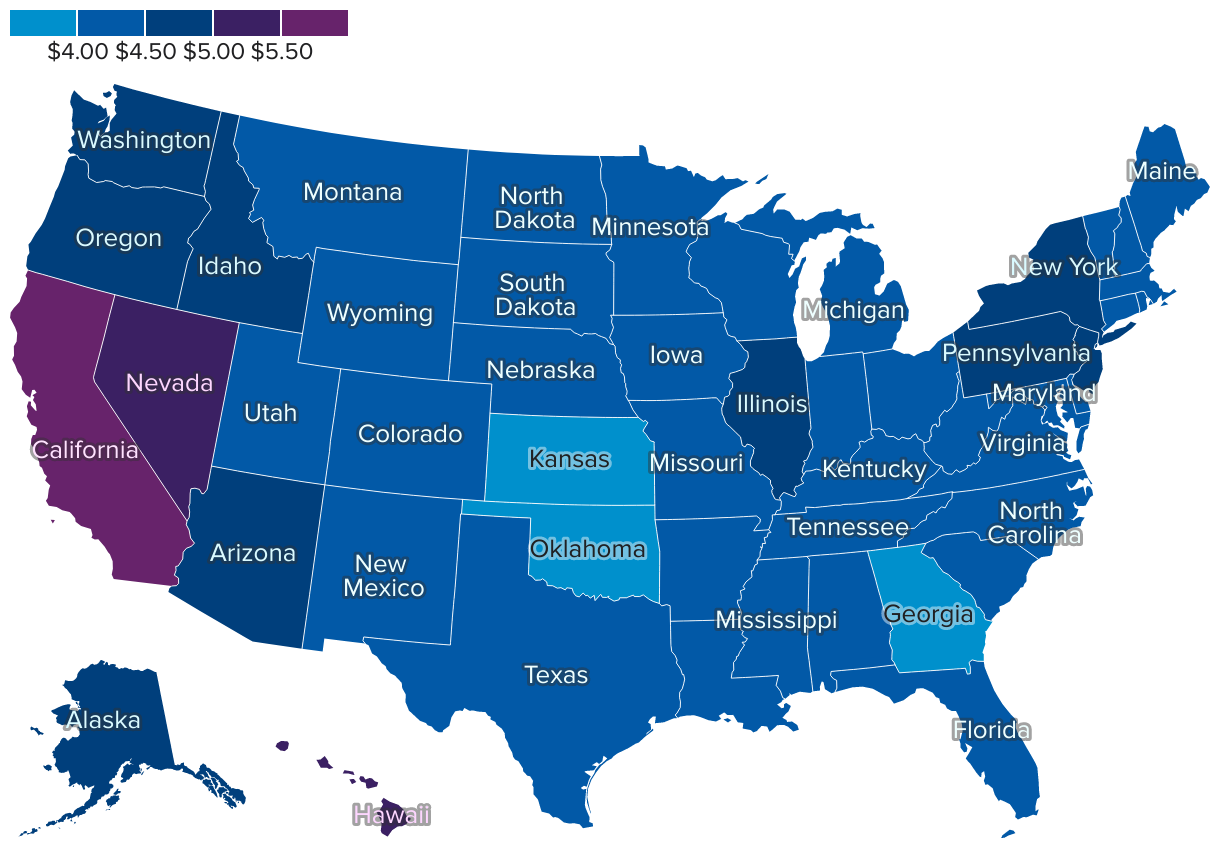Gas prices surge to new record high of $4.43 per gallon
The price of gasoline in the U.S. edged up and hit a new all-time high, as falling capacity at refineries increase the costs of filling up.
The average price of a gallon of regular gas rose to $4.43, according to AAA. That's up from $4.08 a month ago and $3 in May of last year, with spiking energy costs contributing to the fiercest bout of inflation around the country in 40 years. Premium gas now averages $5.07, up from $3.62 a year ago, while diesel over that period has jumped from $3.15 to $5.56 a gallon.
Gas now tops $4 per gallon in nearly every U.S. state, with the biggest jump in fuel prices this week in Michigan, New Jersey, Connecticut, Kentucky and Indiana, according to AAA. The priciest states for gas are in the West: California ($5.87 per gallon), Hawaii ($5.31), Alaska ($4.81), Nevada ($5.13) and Oregon ($4.90).
The cheapest are Georgia ($3.95), Kansas ($3.98) and Oklahoma ($3.99).
The price of crude oil — by far the biggest factor affecting the price of gas — has moved up and down this week. Brent crude, the international standard, rose Friday to $110.71 per barrel, according to FactSet. West Texas Intermediate, the U.S. benchmark, climbed to $109.54.
A drop in oil refinery capacity is also pushing up prices. Refineries turn crude oil into gas and other products; since 2019, refinery capacity in the U.S. has shrunk by about 1 million barrels per day.
"Why can oil move down but wholesale gas prices move up? Because they're different. They may be similar, but refining is the kink in the hose, and we're down 1 [million barrels per day] refining capacity vs early 2019," Patrick DeHaan, head of petroleum analysis for GasBuddy, said on Twitter this week.
Why can oil move down but wholesale gas prices move up? Because they're different. They may be similar, but refining is the kink in the hose, and we're down 1mbpd refining capacity vs early 2019
— Patrick De Haan ⛽️📊 (@GasBuddyGuy) May 10, 2022
At the same time, inventories of gasoline in the U.S. have fallen to a 14-week low, according to data from the Energy Information Administration. A ban on oil and gas imports from Russia, which sent some refined products to the U.S., is also contributing to the shortage.
"The lack of refined product, finished product and intermediates coming out of Russia created a shortage for sure," Michael Jennings, CEO of HF Sinclair, a petroleum refiner, said on a call with investors this week. "I don't see any signs of it ending sooner or well. So, I think that the draw on U.S. refining capacity is going to be very strong."
Jennings said that the drop in capacity as well as crude oil supply since before the pandemic amounts to 2.5% of world consumption.
"It's a big number," he said.
According to Reuters, distillers have also changed their output to create more diesel and jet fuel in order to meet demand in Europe. That means they're producing less gas at a time of year when output should normally rise to prepare for summer's busy driving season.
Retail filling stations are often slow to drop prices at the pump even when the cost of crude declines, Robert Sinclair, senior manager of public affairs for AAA Northeast, told CBS News.
"That fluctuating oil price ... especially if it fluctuates downward, usually won't be reflected at the pump for some time," he said. "Retailers tend to make money when the price goes down rather than when it goes up."
With driving demand picking up as the weather warms, prices at the pump will likely stay elevated for some time. The Energy Information Administration estimates that gas prices will average nearly $4 a gallon this year.
"We're seeing demand pick up with the weather improving — that will only get worse as we shift into the summer driving season," Sinclair said.

